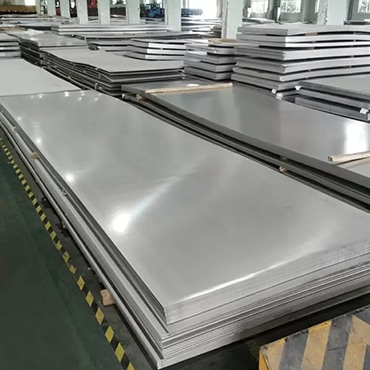Titanium alloys are widely used in aerospace, medical, automotive and high-end manufacturing fields due to their high strength, corrosion resistance and lightweight properties. Among them, Grade 2 Titanium Sheet is the most commonly used type of industrial-grade titanium material, and is highly favored for its excellent mechanical properties and processability.
This guide will comprehensively analyze Grade 2 Titanium Sheet from the aspects of material properties, application fields, purchase recommendations, processing methods, maintenance, etc., to help you gain a deeper understanding of this important industrial material.
What is Grade 2 Titanium Sheet?
Grade 2 Titanium Sheet (ASTM B265 Grade 2) belongs to Commercially Pure Titanium (CP Ti), which is the most widely used grade in industrial-grade titanium materials. Its main characteristics include:
High corrosion resistance: Excellent performance in seawater, chloride solution and acidic environment, suitable for chemical industry, marine engineering and other fields.
Excellent mechanical properties: Tensile strength can reach 480 MPa, high elongation (≥24%), suitable for welding and cold processing.
Good biocompatibility: Widely used in medical implants (such as orthopedic screws, dental implants).
Easy processing: It can be processed by forging, rolling, welding, cutting, etc., and is suitable for a variety of manufacturing processes.

Common applications of grade 2 titanium plates
Aerospace: Aircraft structural parts, engine components (usually used in combination with other alloys).
Chemical equipment: Corrosion-resistant pipes, reactors, tank linings.
Medical field: Orthopedic implants, dental instruments, surgical tools.
Automotive industry: High-performance engine components, lightweight body structures (relatively few applications, but great potential).
Marine engineering: Seawater desalination equipment, ship components, underwater robot shells.
How to choose high-quality grade 2 titanium plates?
When purchasing grade 2 titanium plates, pay attention to the following key factors:
Certification and standards: Make sure the material meets ASTM B265, ASME SB265 or ISO 5832-2 standards.
Chemical composition: The Ti content of pure titanium should be ≥99.2%, and impurities (such as Fe, O, N) must be controlled within the specified range.
Surface quality: The surface of high-quality titanium plates should be smooth, without cracks, pores or oxide layers.
Supplier qualifications: Choose suppliers with good reputation to avoid inferior or counterfeit products.
Test report: Chemical composition analysis and mechanical properties test reports are required to ensure that the materials meet the requirements.
Processing and manufacturing skills of grade 2 titanium plates
The processing characteristics of titanium are different from those of traditional metal materials, and specific methods must be mastered:
Cutting
Thin plates (≤5mm): Laser cutting or water jet cutting are more efficient.
Thick plates: Mechanical cutting (sawing machine, shearing machine) is applicable, but special titanium alloy tools must be used to avoid hardening of materials caused by traditional tools.
Welding
TIG welding (tungsten inert gas shielded welding) is the most commonly used welding method and requires argon protection.
– The surface must be thoroughly cleaned before welding (remove grease and oxides) to avoid affecting the welding quality.
Forming and Bending
– Titanium plates have good ductility and can be cold-bent, but excessive deformation should be avoided to prevent cracking.
Hot forming (heating to 600-800°C) can improve plasticity, but the cooling rate needs to be controlled to prevent thermal stress cracking.
Surface treatment
Polishing: Improve corrosion resistance and appearance quality.
Anodizing: Enhance wear resistance and decorative properties (suitable for non-conductive applications).
FAQ
Q1: What is the difference between Grade 2 and Grade 3 titanium plates?
A: Grade 3 titanium plates are slightly stronger than Grade 2 (due to slightly higher oxygen content), but have slightly lower ductility, making them suitable for industrial applications with higher loads.
Q2: Can titanium plates be cut into complex shapes?
A: Yes, but special equipment (such as water jets and laser cutters) is required. Traditional cutting methods may cause hardening or cracking of the material.
Q3: Can titanium plates be welded to stainless steel?
A: Direct welding is not recommended, as different thermal expansion coefficients can easily cause cracking. An intermediate transition layer (such as nickel-based alloy) can be considered.
______________________________________________________________________________________________________
Daxun Alloy Co., Ltd. provides high-quality Grade 2 Titanium Plates to customers around the world. Grade 2 Titanium Plates that have passed multiple standard certifications are available at favorable prices. Contact us now.

